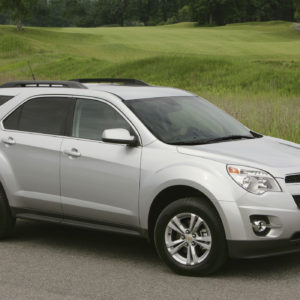Oil lubricates the different moving parts, eliminating friction and helping cool the engine. What you might be wondering now is how to properly and sensibly dispose of car oil.
Why Recycle Used Oil?
According to Environmental Protection Agency (EPA) reports, about 380 million gallons of oil get recycled every year. A gallon of used oil produces about 2.5 quarts of new lubricating oil once it’s been recycled. If you wanted to make that much new lubricating oil with crude oil, you’d need 42 gallons of crude oil. In addition, re-refining used oil takes a third of the energy of purifying crude oil.
Of course, there are also the downsides to not recycling or properly disposing of your used oil. For starters, because oil can easily contaminate water sources, pouring used oil into a gutter or storm drain can contaminate oceans, rivers, and lakes. The flora and fauna that use these water sources will also suffer, along with anyone whose drinking water comes from these places. One oil change worth of used oil can affect up to a million gallons of water. That’s why it’s illegal to dispose of used oil improperly. You can face heavy fines and jail time if you make a habit of it and you get reported by a witness.
How To Dispose of Used Motor Oil
Here are a few simple steps to properly dispose of and recycle used oil:
Step One: Contain
First and foremost, you’ll need to make sure you can contain all the oil that comes out during your vehicle’s oil change. Protect the ground with a plastic sheet or a tarp, and place a suitable container on top. Make sure it’s positioned under the engine to catch all the oil.

Step Two: Drain
The next step is to put on eye protection, work clothes, and gloves, then drain your engine of all its oil. This can take anywhere from 30 minutes to an hour, and it involves loosening the drain plug so the oil trickles out under the engine.
Warm the engine up before draining the oil and, again, wear gloves and protective eyewear to insulate your hands from the hot oil. Don’t forget to empty the oil filter and seal it in a plastic bag for recycling.
Step Three: Transport
Finally, transport the oil to your local recycling center using a suitable container. Many parts stores have a waste oil tank for this. You can ask about it when you buy the oil and filter. If you’re using an open oil drain pan rather than the type shown in the illustrations above, you’ll need to funnel the old oil back into the original bottles for transport. If you’re using a different container, it should be one designed specifically for oil.
Some cities have a curbside recycling program that allows you to skip the actual transporting part entirely. You still need to pack the oil in a proper container, but it’s much more convenient than the typical drop-off. Certain auto stores also accept used oil for recycling. You just need to ask, but etiquette dictates that you buy the oil from the same store where you will take it for recycling.
What Counts as Used Oil?
The EPA defines used oil as “any oil that has been refined from crude oil or any synthetic oil that has been used, and as a result of such use, is contaminated by physical or chemical impurities.” There are three conditions for meeting the EPA’s definition of used oil:
- The used oil needs to be made from synthetic substances or come from crude oil.
- The used oil must have been used as a lubricant, a hydraulic fluid, a heat transfer fluid, a transmission fluid, or a buoyant. It isn’t limited to these forms though.
- The used oil has to be contaminated in some way. Common contaminants include metal scrapings, water, other chemical residues, and dirt.
Used oil from your vehicle ticks all of these boxes.

How Is Used Oil Recycled?
There are many different ways to recycle used oil. One is to recondition the oil by filtering out the impurities. The oil’s life is extended, though it can’t always be returned to its pristine, original state this way.
Re-refining used oil is a more popular choice. When it’s put through this process, used oil is returned to its original state with all of its properties restored. The oil is basically put through the entire refinery process all over again.
Other ways used oil is recycled include it being burned for energy or reinjected into the petroleum refinery process.
Oil recycling is a much more environmentally friendly option than dumping it out in the gutter or down a drain. Now that you know how and where to dispose of oil, it’s your responsibility to practice safe used motor oil disposal. After all, you don’t want to be on the wrong side of the law for this one, and the planet will be all the better for your compliance.
Replacing Your Engine’s Oil? Get Engine Oil Online Easily
Replacing motor oil in the correct intervals is important for a reliable engine. Missing oil change intervals can cause engine damage. If you need engine oil, then look no further than CarParts.com.
CarParts.com offers a wide array of engine oils from the leading aftermarket brands. We offer synthetic blends and full synthetic motor oils, depending on your needs. Choosing the right motor oil is easy, as you can just enter your vehicle’s year, make, model, and engine in our vehicle selector and you’ll see only compatible motor oils.
Don’t let old engine oil linger. Regularly replace it to prevent expensive repairs. Shop for motor oil here at CarParts.com today.
Any information provided on this Website is for informational purposes only and is not intended to replace consultation with a professional mechanic. The accuracy and timeliness of the information may change from the time of publication.



















